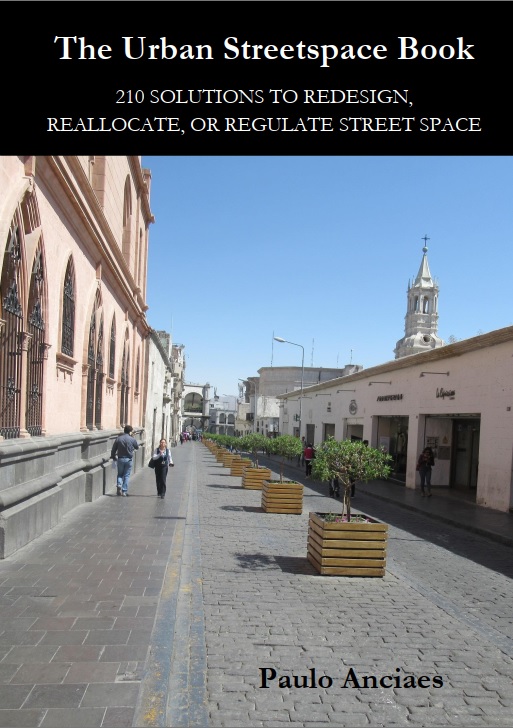Anciaes, P. (2022) The Urban Streetspace Book – 210 Solutions to Design, Allocate, and Regulate Street Space. University College London, London., 442 pages.
Urban streets have different types of users (pedestrians, cyclists, car drivers, bus users, workers making deliveries, people sitting in outdoor cafés, and so on). There is seldom enough space to satisfy all of these users.
The Urban Streetspace Book contains detailed information about 210 possible options to mitigate or solve this problem.

The solutions are for redesigning, reallocating, or regulating streetspace. The book shows how these solutions address the needs of the different users and how they potentially meet economic, social, and environmental policy objectives.
This information was previously scattered across design guidelines, academic studies, technical reports, and websites. In most cases, each source of information focused on specific case studies, looking at a single street user or policy objective. For example, many national and local governments, and some associations, have released design guidelines for pedestrians, or for cyclists. But hardly any publication had considered all street users.
The Urban Streetspace Book brings together information on all street users and classifies it in a systematic way, providing planners and the public with a better understanding of the possible solutions to improve how the street performs.
The book goes beyond technical aspects, looking also at how space is distributed among different street users and the trade-offs that need to be made among different policy objectives. For example, when we give more space to pedestrians, which other street users are affected and how? When we improve streets in order to reduce emissions, what is the effect on the vitality of local businesses?
The contents of this book are also available as an interactive tool where anyone can, instead of browsing through options, select the most adequate options using their own criteria. See more information about this tool in this page, under Roadspace Interventions.
Next resource: Handbook for Active Street Planning, Design, and Management